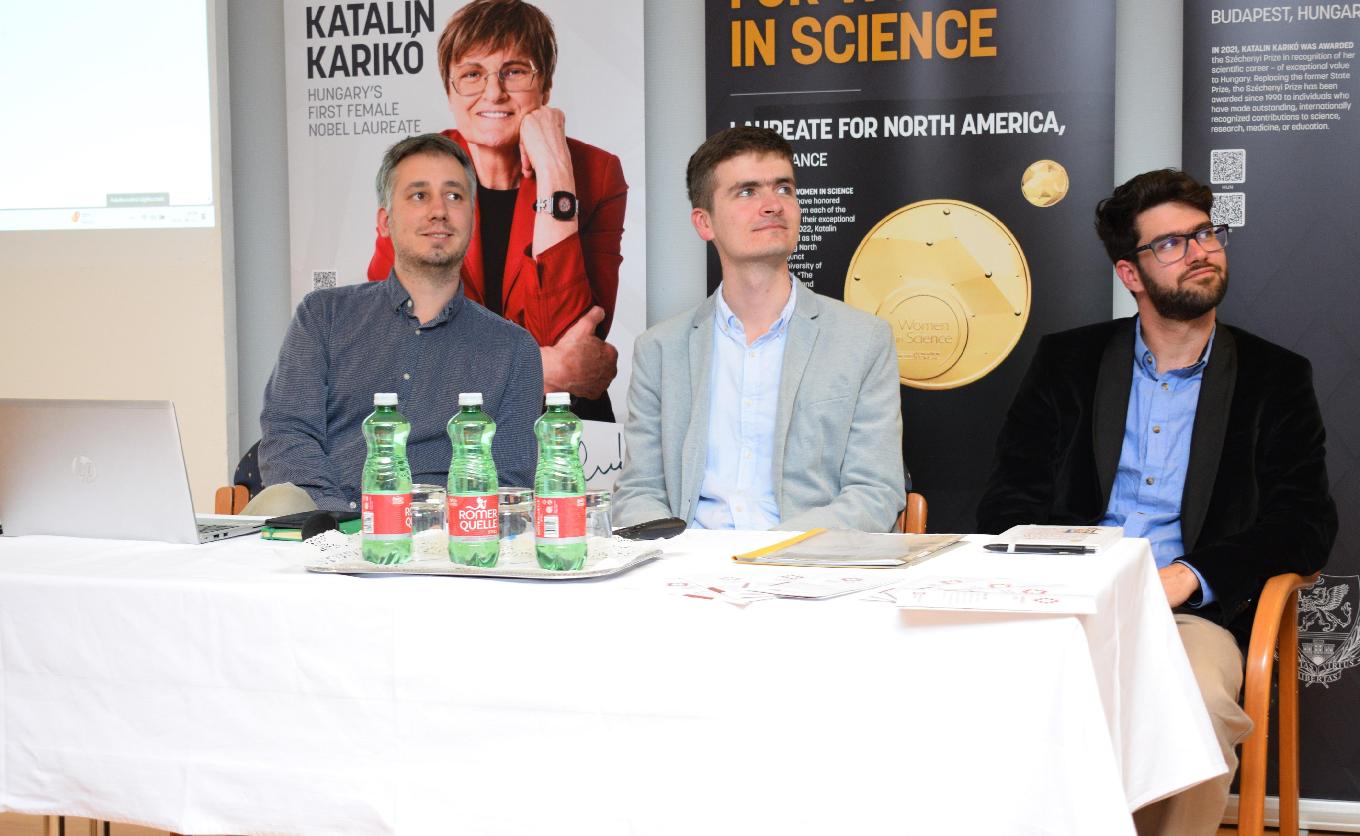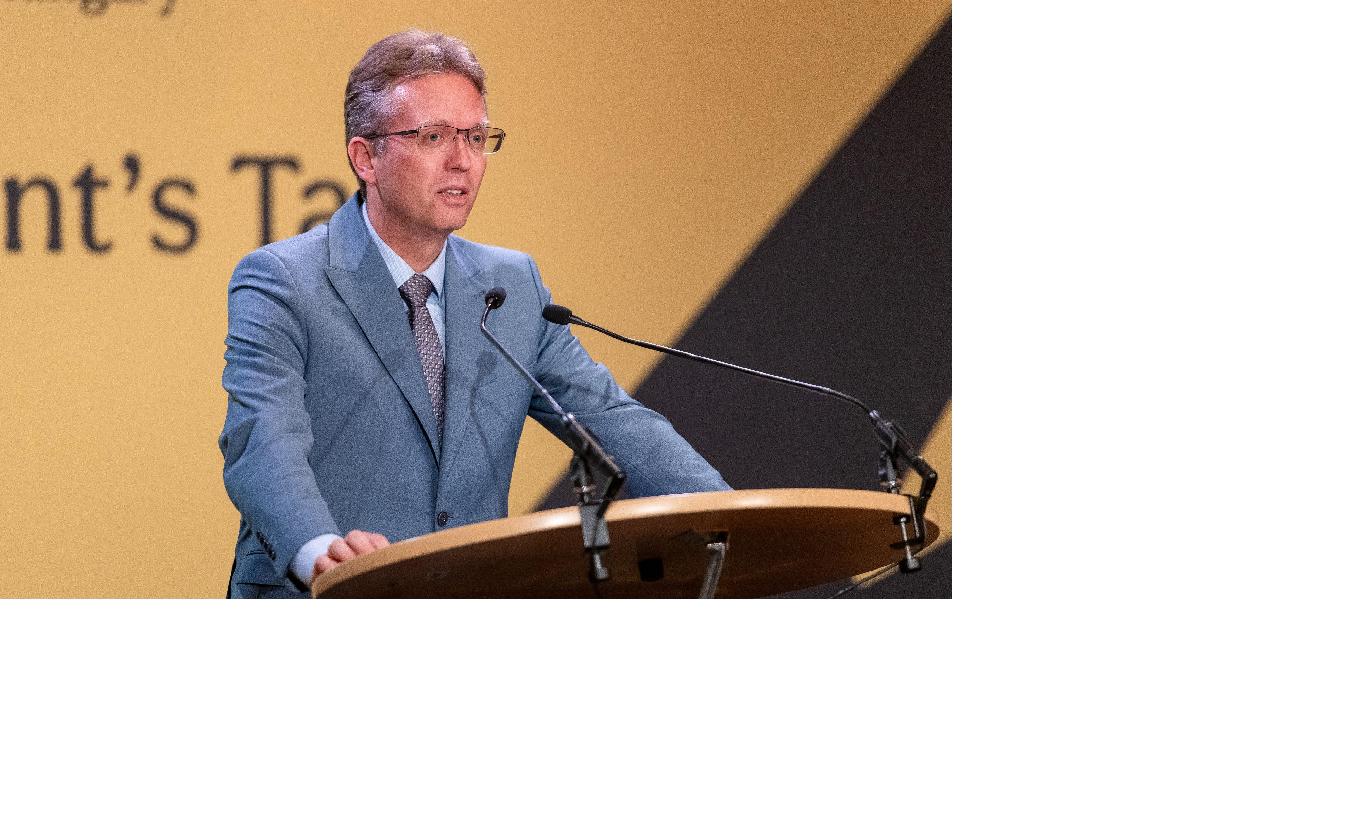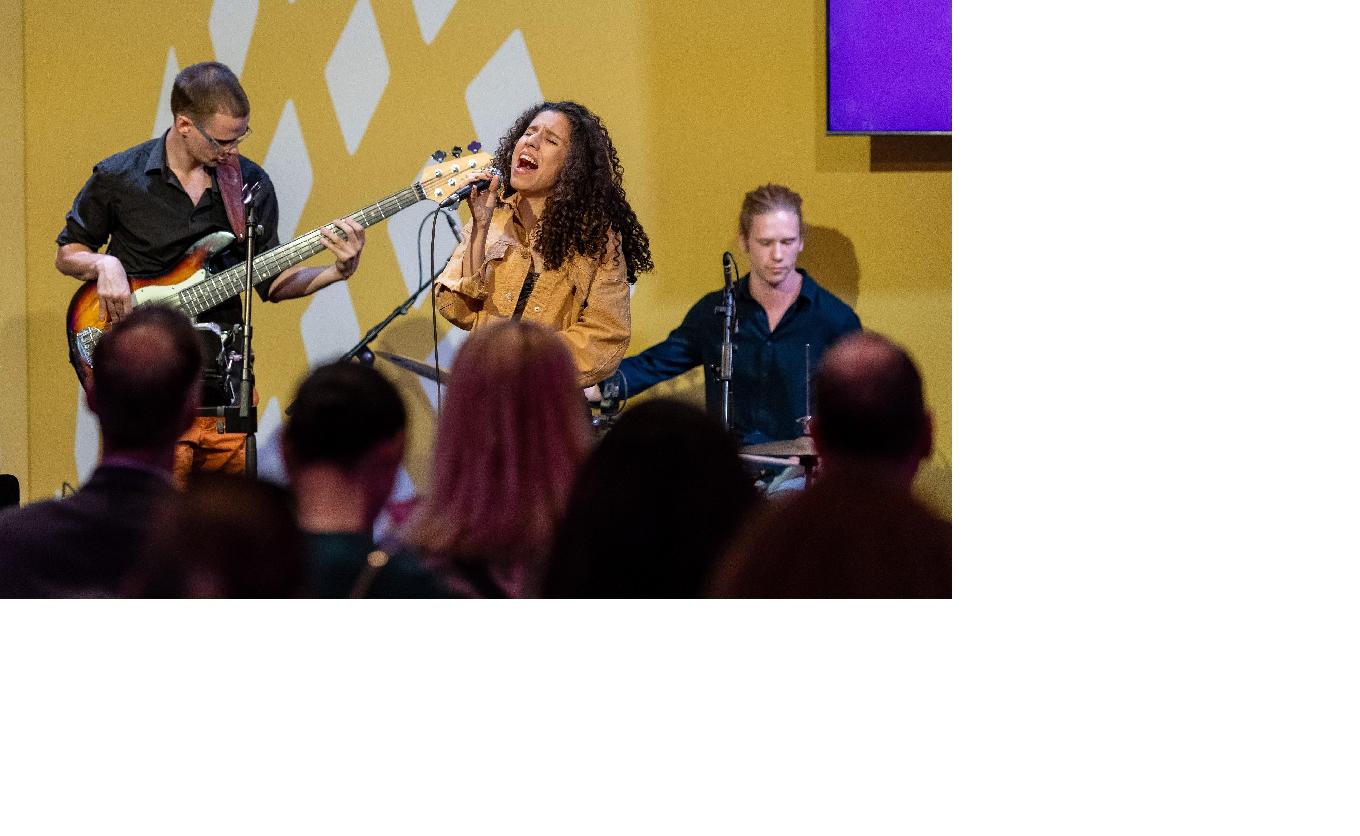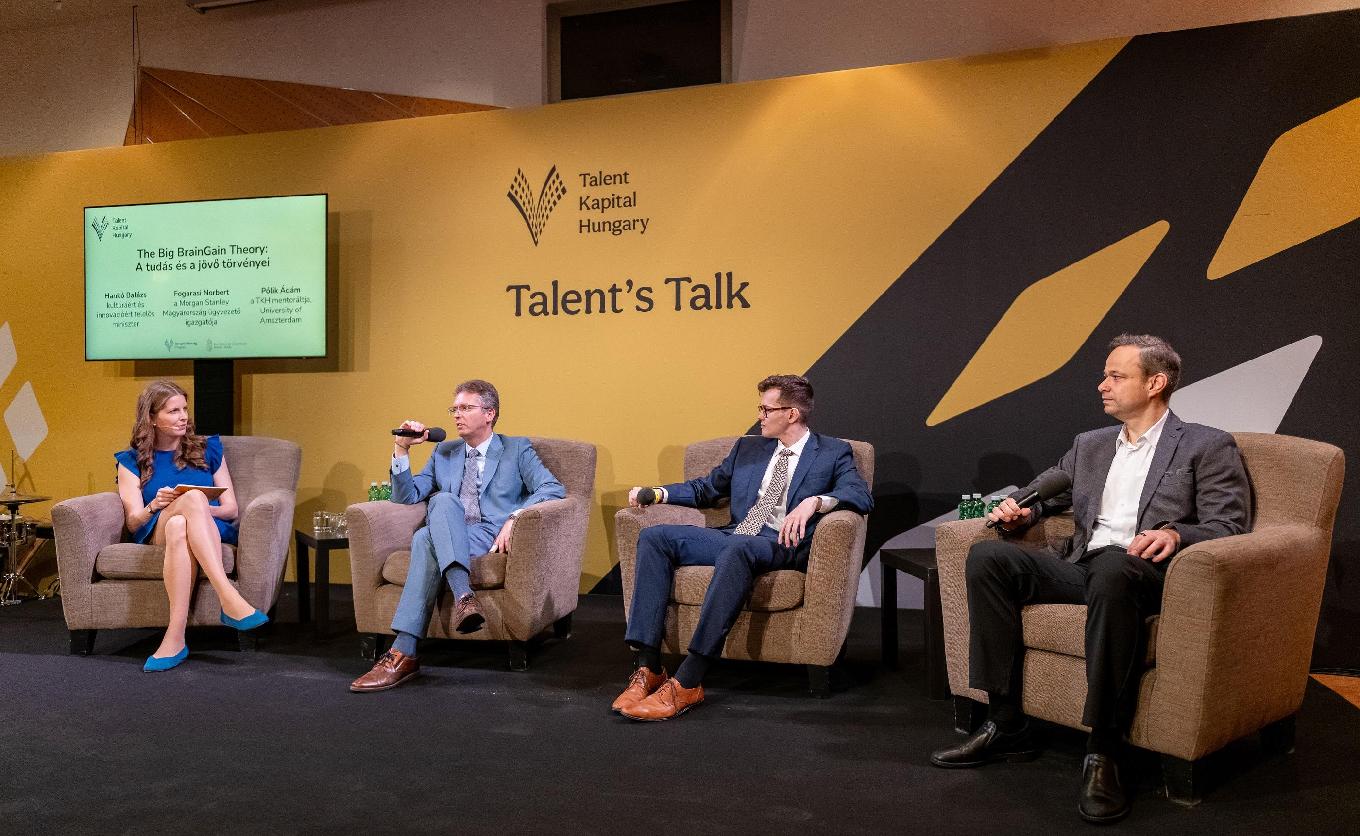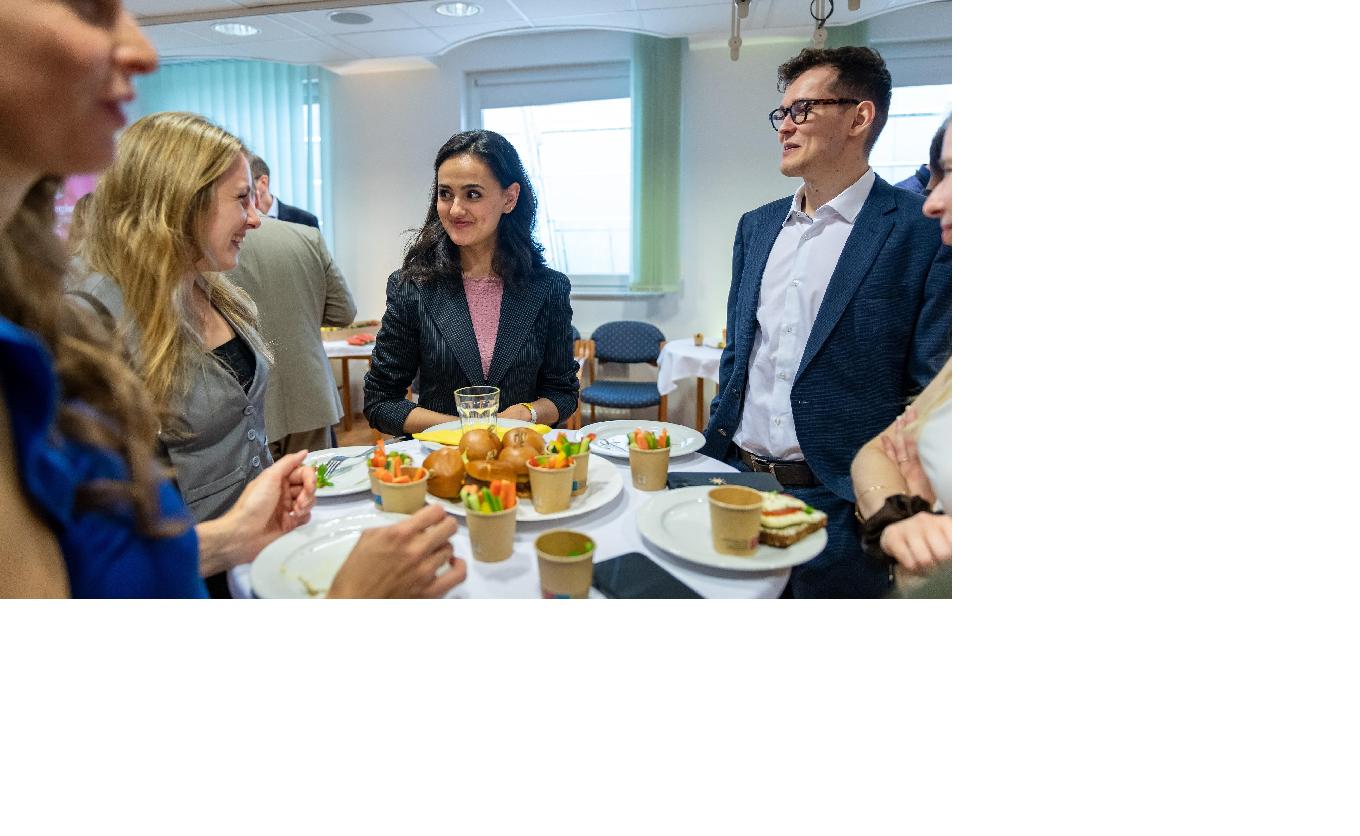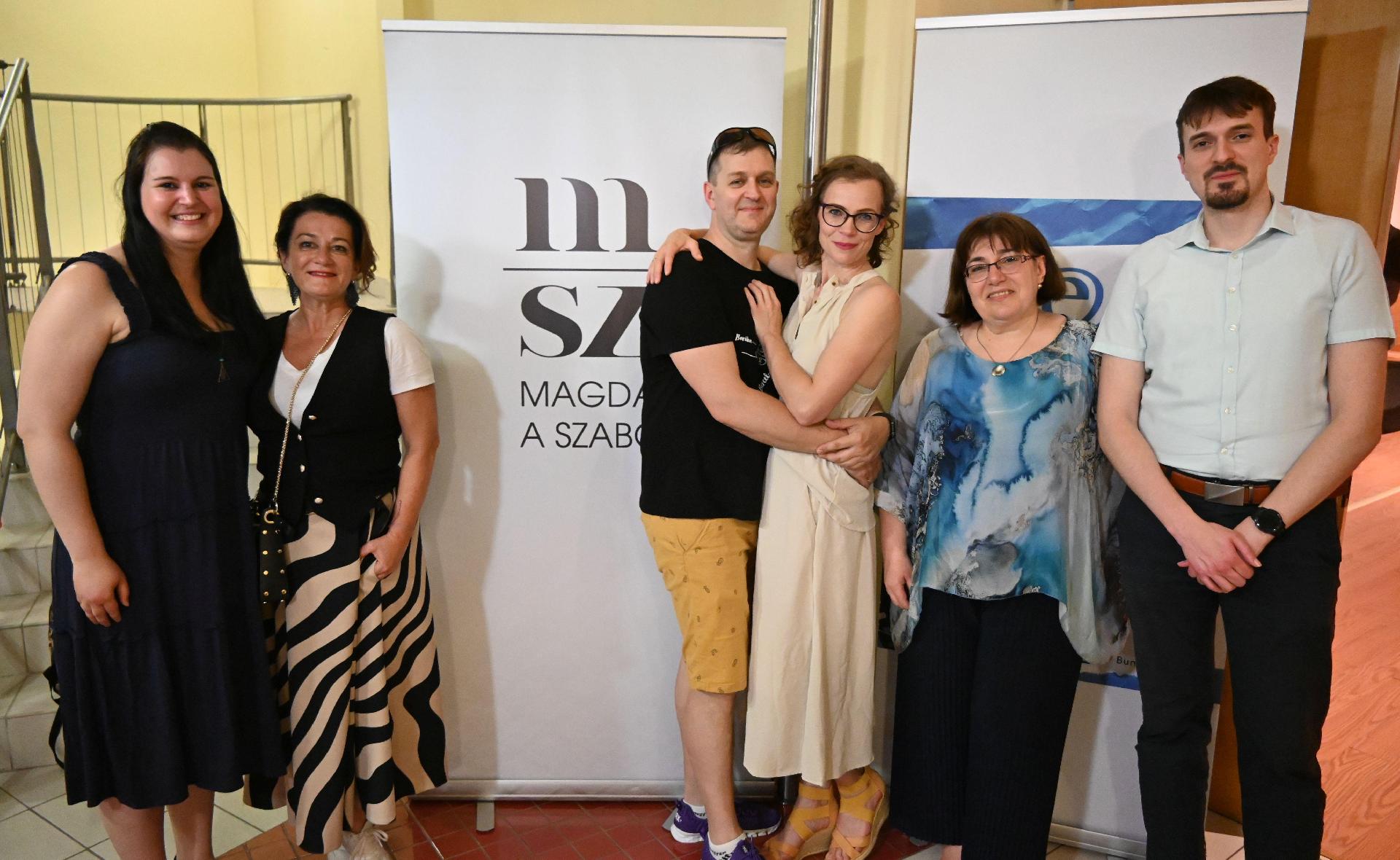
Busy Summer Months in Vienna
The Collegium Hungaricum Vienna hosted a diverse and rich selection of Hungarian cultural events in the heart of the Austrian capital. They co-organised the Talent's Talk conference, with Dr Balázs Hankó, Minister of Culture and Innovation, as the event’s chief patron and guest of honor. They also staged a play about the life of Magda Szabó, which was particularly special due to the author's multiple personal connections to the institute. The Hungarian Historical Institute in Vienna, operating within the Collegium Hungaricum, together with the Institute of National Heritage (NÖRI), jointly presented a database compiling memorial sites across the Carpathian Basin. The finale of the historical TV series Hunyadi was screened alongside a public meet-and-greet event, and a guided city walk was also organized, during which participants explored Hungarian memorials in Vienna and learned about the 100-year history of the Collegium Hungaricum.
On June 2, the Collegium Hungaricum Vienna hosted the “Talent’s Talk” conference, aimed at bringing together young people passionate about shaping the future and experienced professionals. The conference attracted a large audience of young people from the region and Hungary, who had the opportunity to hear inspiring thoughts from prominent figures in the financial, artistic, diplomatic and scientific spheres, as well as from mentors of the National Talent Center. In addition to the predominantly Hungarian speakers, two Austrian participants were also invited to join the conference — among them Dr Christoph Thun-Hohenstein, whose participation was facilitated by the institute. The event featured not only engaging presentations and panel discussions but also musical performances by scholarship-winning artists of the Talentum Hungaricum program, enriching the experience for all attendees. The main guest of the event was Dr Balázs Hankó, Minister of Culture and Innovation, who, besides delivering a welcome speech, took part in the first panel discussion. Several high-ranking officials from the Ministry of Culture and Innovation were also present at the event, including Veronika Varga-Bajusz, State Secretary for Higher Education, Vocational and Adult Education and Youth; Máté Vincze, Deputy State Secretary for Public Collections and Cultural Development; and Zsófia Nagy-Vargha, Deputy State Secretary for Youth. With over a hundred attendees, the conference was one of the most outstanding events of the year at the Collegium Hungaricum Vienna.
On June 5, a special theatrical production awaited the Viennese audience at the Collegium Hungaricum Vienna, portraying the life, work and marriage of Magda Szabó, one of the most widely translated Hungarian authors. Magda Szabó appeared on stage alongside her husband, Tibor Szobotka, completing the iconic image that has long surrounded her legacy. The performance raised questions that are still relevant today, yet have remained hidden until now. The play was written and directed by Tibor Mészáros, based on an idea by Gyöngyi Porkoláb, with Tibor Mészáros and Nikolett Krajcsi as the cast, the production manager was Gyöngyi Porkoláb (Allee Management). Magda Szabó holds a special place in the 100-year history of the Viennese Collegium Hungaricum: during the 1980s, she was a frequent guest at the institute and wrote several of her novels within its walls.
During the Hungarian-language event on June 16, organized by the Hungarian Historical Institute in Vienna and the Institute of National Heritage (NÖRI), NÖRI staff presented the Memorial Site NameSpace (Emlékhely NévTér) database, which collects Hungarian memorial sites across the Carpathian Basin. Participants had the opportunity to gain insight into the mission and programs of the Institute of National Heritage, as well as learn about the role of collective memory and the Mohács500 program, a major historical, cultural, and commemorative initiative marking the 500th anniversary of the Battle of Mohács. The presentation marked the first phase of a project aimed at gathering Austrian Hungarian cultural and historical memorial sites, which will provide the necessary framework for interested partners in Vienna and beyond to fill in the data. The main goal of the introduction was to inform attendees about the objectives and functioning of the Memorial Site NameSpace database and to offer essential guidance on how anyone can contribute to expanding the shared knowledge about Hungarian memorials in Austria.
The Collegium Hungaricum Vienna organized a film screening and audience meeting to celebrate the great success of the historical series Hunyadi on Austrian TV (ORF). On June 16, the audience had the chance to watch the exciting finale of the series on the big screen — together with the main character, Gellért L. Kádár. The ten-episode series tells the extraordinary story of János Hunyadi, the Hungarian general who fought against the Ottoman Empire under extremely harsh conditions in the 15th century, and achieved a decisive victory that changed the history of Europe. Directed by Oscar-nominated Robert Dornhelm and other Hungarian directors, the series combines a high-caliber international cast, spectacularly staged battles and historical accuracy. The final episode was screened in German. The digital copy was provided to the institute by ORF, with the assistance of MR Film. The screening was followed by a discussion in English with the main character, L. Gellért Kádár, moderated by Dr Márton Méhes, Director of the Collegium Hungaricum. After the talk, numerous questions came from the audience, followed by autograph signing and photo sessions. For this special occasion, the institute created small autograph cards featuring the film’s poster, which anyone could sign with the main character.
On June 17, the institute organized a city sightseeing walk during which participants explored Vienna’s Hungarian memorial sites and the 100-year history of the Collegium Hungaricum. Along the way, they visited historical locations that serve as symbolic milestones in Hungarian-Austrian cultural relations. They recalled how the Palace of the Hungarian Royal Guard, founded by Maria Theresa, was transformed into a scientific and cultural center. They also discussed why the Collegium Hungaricum left the Trautson Palace and how the cultural relations between the two countries evolved during the Cold War and after the fall of communism. What made the walk special was that the guide — who was also very well-prepared in other areasn — focused specifically on the century-long history of the Collegium Hungaricum, with assistance from CH staff, explaining at every possible stop the significance of the location in the context of Hungarian scientific and cultural diplomacy in Vienna, as well as Austrian-Hungarian scientific and cultural relations. The two-hour Hungarian-language walk ended at the CH building, where participants could join the evening film screening and visit the exhibition located in the first-floor gallery. Further walks will take place during the autumn.

